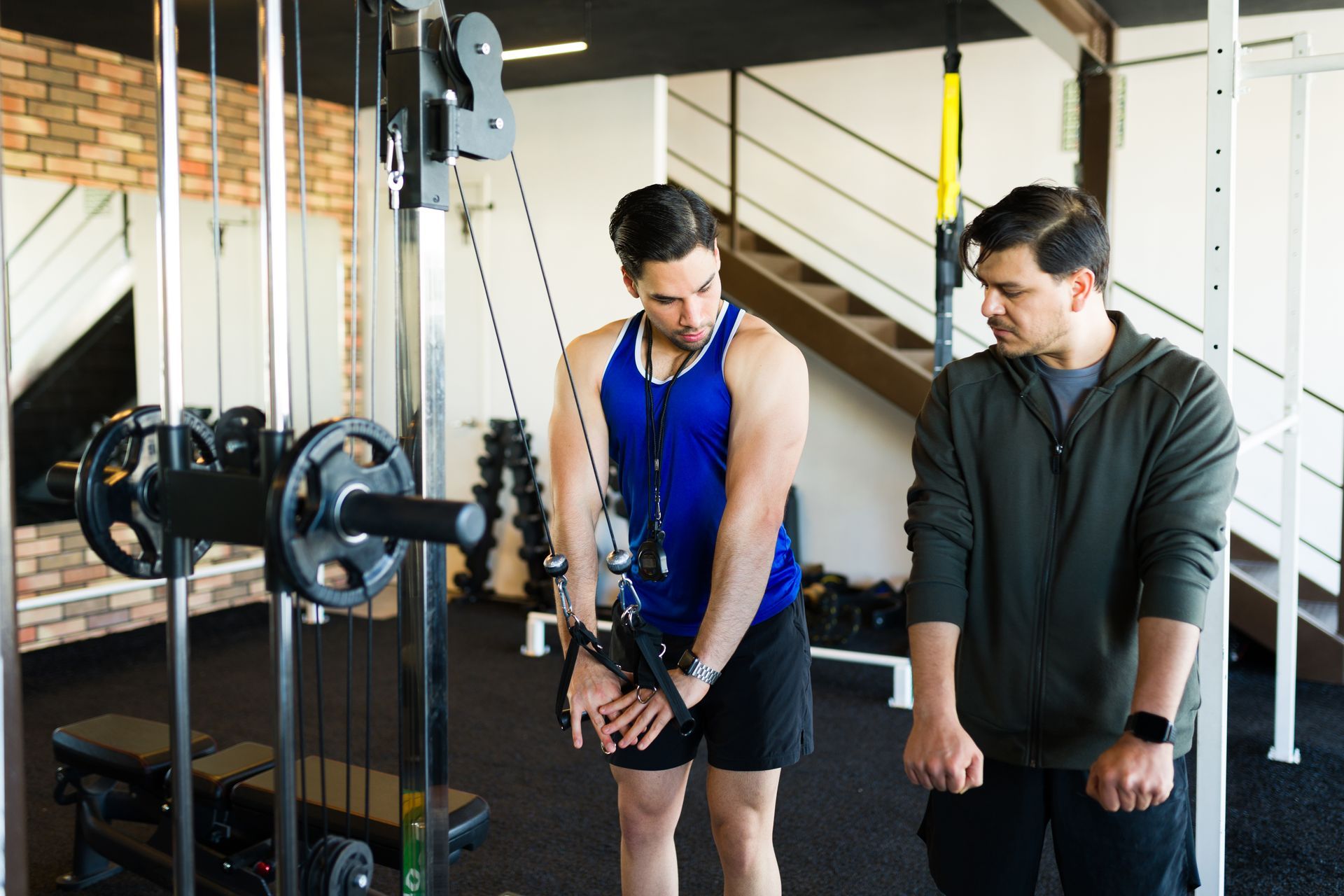May 6, 2024
The Nashville Personal Trainer's Guide to the Protein-First Eating Strategy
Protein First Eating
In the bustling landscape of Nashville's fitness scene, where personal trainers strive to empower clients with optimal health, one dietary approach reigns supreme: the protein-first eating strategy. This scientifically-grounded method not only simplifies nutrition but also aligns perfectly with the goals of personal training — from weight management to muscle gain. Let's dive into how this approach can revolutionize your diet and elevate your fitness journey.
Understanding the Protein-First Principle
At its core, the protein-first eating strategy emphasizes prioritizing protein in every meal and snack. This straightforward approach isn't about exclusion but about ensuring protein takes center stage. Why? Because a higher protein intake triggers a cascade of benefits that naturally regulate appetite, reduce cravings, and optimize body composition — all essential components of effective personal training.
The Science Behind Protein-First
Protein isn't just another macronutrient; it's a powerhouse with unique properties. Highly satiating and metabolically advantageous, protein boasts a high thermic effect, meaning your body expends more energy digesting it compared to fats or carbohydrates. This metabolic boost is invaluable for weight management and fat loss, making protein a non-negotiable part of any effective personal training regimen.
One scientific theory that strongly supports the protein-first approach is the protein leverage hypothesis. In a world inundated with carb-heavy and fatty foods, prioritizing protein helps individuals naturally align their eating habits with their body's needs, without the need for strict calorie counting or food restrictions — a philosophy perfectly in line with the ethos of personal training.
The Benefits of a Protein-First Diet
For Nashville residents embarking on their fitness journey, the protein-first eating strategy offers a plethora of advantages, including:
1. Enhanced Fat Loss: By supporting fat loss while preserving lean muscle mass, a protein-first approach leads to a more favorable body composition, a goal sought after by many personal training clients.
2. Increased Satiety: Protein-rich foods keep hunger at bay, naturally curbing calorie intake and empowering clients to make healthier choices throughout the day.
3. Metabolic Advantages: With its high thermic effect, protein boosts metabolism, aiding in weight management and energy levels — crucial for those engaging in rigorous personal training sessions.
4. Muscle Maintenance: Adequate protein intake is paramount for muscle repair and growth, essential for clients committed to regular exercise and strength training.
Protein and Satiety Hormones
The interplay between protein intake and hormones like ghrelin and peptide YY is particularly fascinating. Ghrelin, the "hunger hormone," decreases with increased protein intake, reducing appetite and subsequent calorie intake. Conversely, protein consumption elevates peptide YY levels, promoting feelings of fullness and making it easier for personal training clients to maintain a caloric deficit without succumbing to constant hunger.
Curbing Cravings Through Protein Preloading
In the realm of personal training, strategies like protein preloading can be game-changers. Research shows that consuming a small protein-rich snack before meals significantly increases satiety, reduces subsequent calorie intake, and helps regulate blood sugar levels — invaluable tools for clients striving to achieve their fitness goals.
The Thermogenic Power of Protein
When it comes to weight management and body composition, protein's thermogenic properties are unparalleled. By boosting metabolism and increasing energy expenditure, prioritizing protein ensures clients burn more calories throughout the day, making fat loss more achievable and sustainable — a cornerstone of effective personal training.
Debunking Myths: Protein and Body Fat
Concerns about excess protein being stored as body fat are common but largely unfounded. Unlike carbohydrates and fats, the body's pathway to convert protein into fat is inefficient. Studies consistently show that high-protein diets do not lead to fat gain, reinforcing the efficacy and safety of prioritizing protein — a message personal trainers can confidently impart to their clients.
Resistance Training and Protein: A Synergistic Effect
In the realm of personal training, the synergy between a high-protein diet and resistance training cannot be overstated. By enhancing muscle synthesis and protecting against fat gain, this combination optimizes the protein-first strategy, empowering clients to achieve their fitness goals more effectively.
Implementing the Protein-First Strategy
For Nashville residents under the guidance of personal trainers, adopting a protein-first approach is both straightforward and rewarding. Practical tips include:
1. Starting with Breakfast: Incorporate protein-rich foods into your morning meal to kickstart your day on the right nutritional foot.
2. Smart Snacking: Swap high-carb or fatty snacks for protein-packed alternatives to stay satiated between meals.
3. Protein Preloading: Enjoy a small protein-rich snack before main meals to enhance satiety and control calorie intake.
4. Understanding Protein Sources: Diversify your protein sources with a mix of animal and plant proteins to ensure a comprehensive amino acid profile.
5. Monitoring Intake: Track your protein intake initially to ensure you're meeting your goals, adjusting as needed based on activity level and specific health objectives.
By embracing the protein-first eating strategy, Nashville's personal training clients can optimize their nutrition, supercharge their workouts, and embark on a journey to lasting health and vitality — all under the expert guidance of their dedicated personal trainers.





